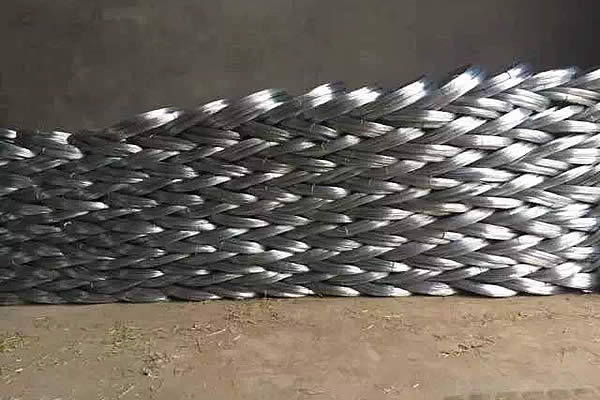 TEL:
+86-13102802206
TEL:
+86-13102802206
 Email:
fencenetting@china.com
Email:
fencenetting@china.com
 Language
Language
 TEL:
+86-13102802206
TEL:
+86-13102802206
 Email:
fencenetting@china.com
Email:
fencenetting@china.com
 Language
Language


The Importance of 316L Welding Wire in Modern Fabrication
The world of welding has seen significant advancements over the years, with various materials being utilized to enhance durability, resistance, and overall performance in diverse applications. Among these materials, 316L stainless steel welding wire is recognized for its remarkable properties and versatility. This article delves into the importance of 316L welding wire, its applications, benefits, and guidelines for proper usage.
Understanding 316L Stainless Steel
Before discussing 316L welding wire, it is essential to comprehend what 316L stainless steel entails. 316L is a molybdenum-bearing austenitic stainless steel that is especially resistant to corrosion, making it an ideal choice for harsh environments. The “L” in 316L signifies low carbon, which means this material is less susceptible to sensitization— a process where grain boundary carbide precipitation occurs, leading to intergranular corrosion. This characteristic makes 316L perfect for use in environments where exposure to corrosive agents (such as chlorides) is prevalent.
Applications of 316L Welding Wire
316L welding wire is predominantly used in industries that require high corrosion resistance and strength. Its common applications include
1. Chemical Processing Due to its ability to withstand corrosive chemicals, 316L welding wire is widely used in the construction of tanks, piping, and pressure vessels in chemical plants. 2. Food and Beverage Industry The food industry demands hygienic and corrosion-resistant materials. 316L is often used for manufacturing equipment that comes into direct contact with food products. 3. Marine Engineering Ships and offshore structures are exposed to seawater, making 316L a preferred choice for shipbuilding and marine applications due to its excellent resistance to pitting and crevice corrosion. 4. Pharmaceuticals The pharmaceutical industry requires materials that can prevent contamination. 316L welding wire is utilized in the construction of clean room environments and pipelines. 5. Oil and Gas In oil and gas extraction, 316L welding wire is employed to fabricate equipment that must endure harsh chemical environments and high pressure.
Benefits of 316L Welding Wire

The choice of 316L welding wire is not without its advantages. Some of the key benefits include
- Corrosion Resistance Its ability to resist oxidation and corrosion extends the lifespan of welded structures considerably. - Strength at Elevated Temperatures It maintains good mechanical properties at higher temperatures, making it suitable for industries that operate in extreme conditions. - Cleaner Welds 316L wire produces welds with a smooth surface finish, minimizing the likelihood of inclusions and enhancing aesthetic appeal. - Versatility It can be used with various welding techniques, including TIG (Tungsten Inert Gas), MIG (Metal Inert Gas), and stick welding, providing flexibility for different applications.
Guidelines for Using 316L Welding Wire
To maximize the performance and longevity of welded structures using 316L welding wire, certain guidelines should be adhered to
- Pre-Welding Preparation Ensure the base metal is clean, free of oxides, scales, and contaminants to achieve strong weld integrity. - Welding Parameters Adjust the voltage, current, and travel speed according to the thickness of the materials and the specific welding process being used. - Post-Weld Treatment Consider passivation treatments post-welding. A passivation layer can further enhance corrosion resistance by forming a protective oxide layer on the surface. - Select the Right Filler Material It is crucial to use filler materials that match the base metal's composition for optimal results.
Conclusion
In conclusion, 316L stainless steel welding wire is an essential component in modern fabrication across multiple industries. Its superior corrosion resistance, strength, and versatility make it the material of choice for many applications. Proper usage and adherence to guidelines ensure the effectiveness of welding operations, leading to robust, long-lasting structures that can withstand the test of time and environmental challenges. As industries continually evolve and seek innovative solutions for their demands, the role of 316L welding wire will remain pivotal in facilitating progress and enhancing safety across the board.